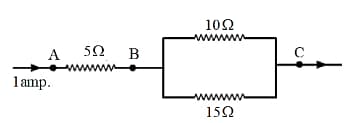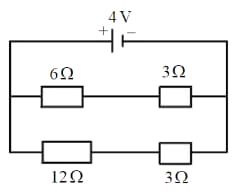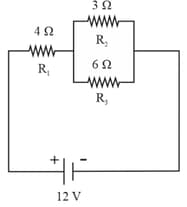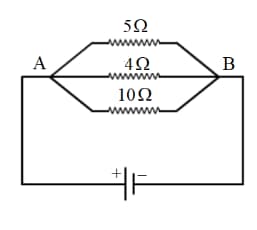Explain with diagrams what is meant by the "series combination" and "parallel combination" of resistance. In which case the resultant resistance is: (i) less and (ii) more, than either of the individual resistances?

Important Questions on Electricity
Draw the circuit diagram and calculate:
(a) the total resistance of the circuit.
(b) current through the circuit.
(c) the potential difference across the electric bulb.
(d) the potential difference across the resistance wire.
Three resistors are connected as shown in the diagram.

Through resistor a current of is flowing.
(i) What is the current through the other two resistors?
(ii) What is the potential difference across AB and across AC?
(iii) What is the total resistance?
For the circuit shown in the diagram below:

What is the value of
(i) current through resistor?
(ii) the potential difference across the resistor?
Two resistors, with resistances and respectively are to be connected to a battery of emf so as to obtain:
(i) minimum current flowing (ii) maximum current flowing
(a) How will you connect the resistances in each case?
(b) Calculate the strength of the total current in the circuit in the two cases.
The circuit diagram given below shows the combination of three resistors and

Find:
(i) the total resistance of the circuit.
(ii) the total current flowing in the circuit.
(iii) the potential difference across .

